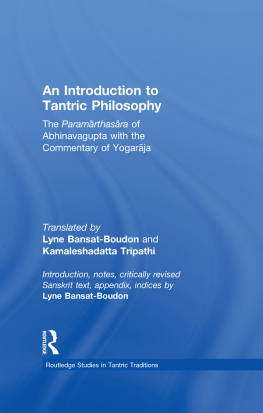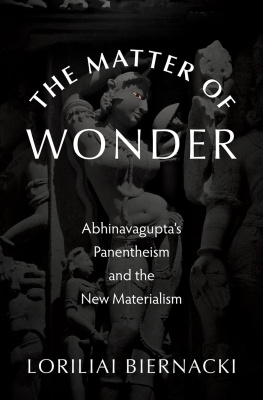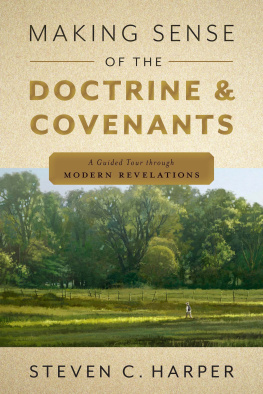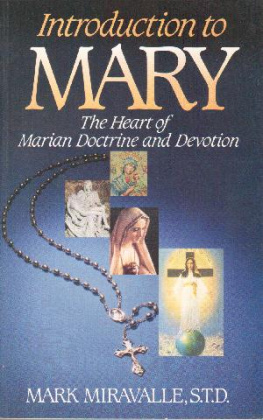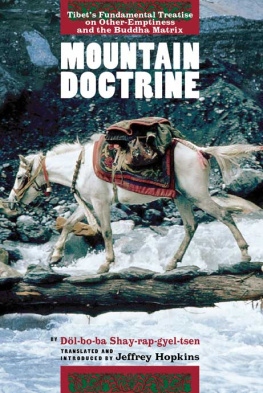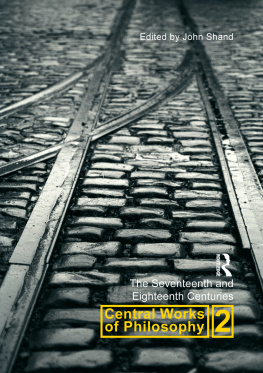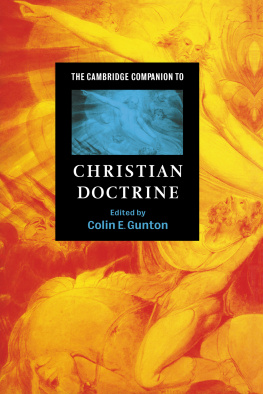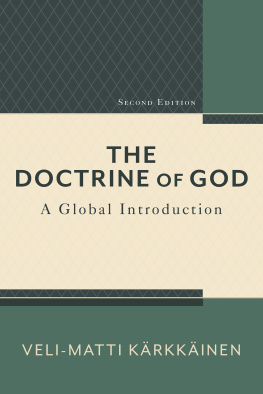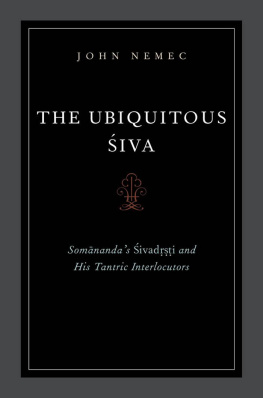AN INTRODUCTION TO TANTRIC PHILOSOPHY
The Paramrthasra of Abhinavagupta with the Commentary of Yogarja
The Paramrthasra, or Essence of Ultimate Reality, is a work of the Kashmirian polymath Abhinavagupta (tentheleventh centuries). It is a brief treatise in which the author outlines the doctrine of which he is a notable exponent, namely nondualistic aivism, which he designates in his works as the Triad, or Triad of three principles: iva, akti and the embodied soul (nara).
The main interest of the Paramrthasra is not only that it serves as an introduction to the established doctrine of a tradition, but also advances the notion of jvanmukti, liberation in this life, as its core theme. Further, it does not confine itself to an exposition of the doctrine as such but at times hints at a second sense lying beneath the evident sense, namely esoteric techniques and practices that are at the heart of the philosophical discourse. Its commentator, Yogarja (eleventh century), excels in detecting and clarifying those various levels of meaning.
An Introduction to Tantric Philosophy presents, along with a critically revised Sanskrit text, the first annotated English translation of both Abhinavaguptas Paramrthasra and Yogarjas commentary.
This book will be of interest to Indologists, as well as to specialists and students of Religion, Tantric studies and Philosophy.
Lyne Bansat-Boudon is Professor in the Section des sciences religieuses at the cole Pratique des Hautes tudes (EPHE) in Paris, and an Honorary Senior Member of the Institut Universitaire de France (IUF). Her main fields of research are Sanskrit Literature and Poetics, Aesthetics and the aiva tradition.
She published in 1992 Potique du thtre indien. Lectures du Ntyastra, and, in 2006, as the chief editor of the volume and a translator, Thtre de lInde ancienne, Gallimard (Bibliothque de la Pliade).
Kamaleshadatta Tripathi is Emeritus Professor at the Benares Hindu University, India, where he was Dean of the Faculty of Sanskrit Learning and Theology and Head of the Department of Religious and Agamic Studies. For several years he also was the director of the Klidsa Akademi in Ujjain. His research interests include Agamic Philosophy, Hindu Theology, Philosophy of Grammar, Sanskrit Literature, Poetics and Aesthetics.
ROUTLEDGE STUDIES IN TANTRIC TRADITIONS
Series Editor: Professor Gavin Flood, University of Stirling
The Routledge Studies in Tantric Traditions series is a major new monograph series which has been established to publish scholarship on South, East and Southeast Asian tantric traditions. The series aims to promote the serious study of both Hindu and Buddhist tantric traditions through the publication of anthropological and textual studies and will not be limited to any one method. Indeed, the series would hope to promote the view that anthropological studies can be informed by texts and textual studies informed by anthropology. The series will therefore publish contemporary ethnographies from different regions, philological studies, philosophical studies, and historical studies of different periods which contribute to the academic endeavour to understand the role of tantric texts and their meaning in particular cultural contexts. In this way, the series will hope to establish what the continuities and divergencies are between Buddhist and Hindu tantric traditions and between different regions. The series will be a major contribution to the fields of Indology, Sinology, History of Religions, and Anthropology.
IDENTITY, RITUAL AND STATE IN TIBETAN BUDDHISM
Martin A. Mills
THE KHECARVIDY OF DINTHA
A critical edition and annotated translation of an early text of hath ayoga
James Mallinson
AN INTRODUCTION TO TANTRIC PHILOSOPHY
The Paramrthasra of Abhinavagupta with the Commentary of Yogarja
Lyne Bansat-Boudon and Kamaleshadatta Tripathi
First published 2011 by Routledge
2 Park Square, Milton Park, Abingdon, Oxon OX14 4RN
Simultaneously published in the USA and Canada
by Routledge
711 Third Ave, New York, NY 10017
Routledge is an imprint of the Taylor & Francis Group, an informa business
First issued in paperback 2013
2011 Lyne Bansat-Boudon and Kamaleshadatta Tripathi
First issued in paperback 2013
All rights reserved. No part of this book may be reprinted or reproduced or utilised in any form or by any electronic, mechanical, or other means, now known or hereafter invented, including photocopying and recording, or in any information storage or retrieval system, without permission in writing from the publishers.
British Library Cataloging in Publication Data
A catalogue record for this book is available from the British Library.
Library of Congress Cataloging in Publication Data
A catalog record for this book has been requested.
ISBN 978-0-415-34669-6 (hbk)
ISBN 978-0-203-84593-6 (ebk)
ISBN 978-0-415-83659-1 (pbk)
Contents
In the text, kriks and pratkas as are set in boldface.
In general, an effort has been made to limit citation of Sanskrit terms in parentheses. However, it has been judged desirable to make the basic vocabulary of the doctrine visible to the reader. Thus, the Sanskrit term is instanced
when it designates a key notion of the Trika, or one of its favorite metaphors, and at its first occurrence,
when it is required in order to grasp the sense of a gloss (e.g., ad 33, where kr is glossed by khela),
in order to take note of the more or less uniform translation of diverse, but essentially synonymous, Sanskrit terms, e.g., X Y Z, all of which have been translated by consciousness (note, especially, the variety of terms for liberation),
mutatis mutandis, in order to take note of the polysemy of certain crucial Sanskrit terms, paramara, paramrtha, smrti, etc.
Certain Sanskrit terms of wider, but often technical usage, whose meaning is not easily grasped, or which are expanded upon, have been treated in the notes. Literal translations are likewise to be found there.
Sanskrit terms that have become, or are used as, English words are left in Roman, and may accept a plural suffix: krika, loka, mantra, avataraik, guru, karman, etc.
Likewise, marks of suppletions have been limited as much as possible to those necessary to make sense of an often laconic Sanskrit, especially as concerns the many technical explanations of concepts and terms. The frequently occurring ha, referring always to Abhinavagupta, has been rendered by the master says.
Glosses or terms to be understood as such are enclosed in single quotation marks. Double quotation marks indicate that the author wishes to single out a word or phrase, not quoting it from a specific document but referring it to a general background that will be recognized by the reader (Chicago Manual of Style, 13th ed.).
Certain elaborations of notions treated in the notes have been grouped together in an Appendix.
In addition to the key terms of the doctrine, certain recurring segments of its phraseology have been indexed, each with a translation, forming a glossary of the essential points of the system.
To this has been added an Index locorum and an Anthology of spiritualexperience (see Intr., n. 99).
The Sanskrit text reproduced here is based on the KSTS edition. It has been revised and corrected at places after collation of nine manuscripts; see On the Sanskrit Text.
For the history of the work here presented, it may be useful to note that Prof. K. D. Tripathi is a disciple of Rmevara Jh, the author of the
Next page
